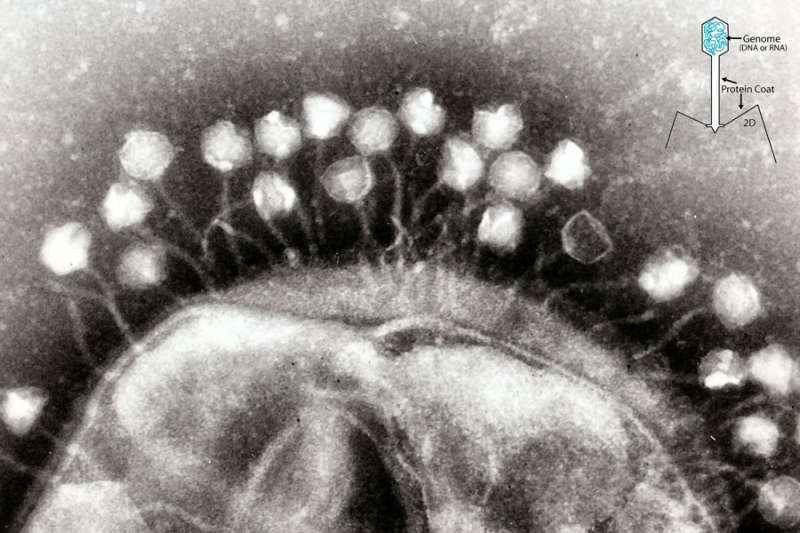
|
Credit & Copyright: Wikipedia;
Insert: Mike Jones
Explanation:
There are more bacteriophages on Earth than any other life-like form.
These small
viruses are not clearly a form of life,
since when not attached to bacteria they are completely dormant.
Bacteriophages
attack and eat
bacteria
and have likely been doing so for over 3 billion years ago.
Although initially discovered early last century, the tremendous abundance of
phages
was realized more recently when it was found that a single drop of common seawater
typically contains millions of them.
Extrapolating,
phages
are likely to be at least a billion billion (sic) times more numerous than humans.
Pictured above is an
electron micrograph of over
a dozen bacteriophages attached to a single bacterium.
Phages are very
small --
it would take about a million of them laid end-to-end to span even one millimeter.
The ability to kill bacteria makes phages a
potential ally
against bacteria that cause human disease, although
bacteriophages
are not yet well enough understood to be in wide spread medical use.
|
January February March April May June July August September October November December |
| ||||||||||||||||||||||||||||||||||||||||||||||||
NASA Web Site Statements, Warnings, and Disclaimers
NASA Official: Jay Norris. Specific rights apply.
A service of: LHEA at NASA / GSFC
& Michigan Tech. U.
Based on Astronomy Picture
Of the Day
Publications with keywords: Earth - life
Publications with words: Earth - life
See also:
